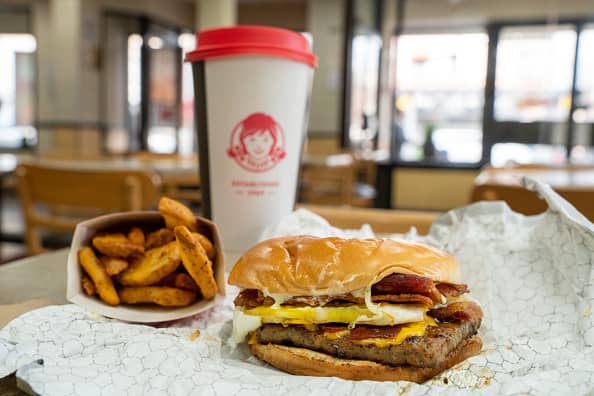Wendy’s breakfast nabs new customers as pandemic pushes consumers to break habits

The Breakfast Baconator and Seasoned Potatoes are part of the breakfast menu at Wendy’s restaurants on March 2, 2020 in New York City.
David Dee Delgado | Getty Images
Wendy’s has become the rare restaurant company to lure customers to its restaurants for breakfast even during the coronavirus pandemic.
In the last eight months, consumers broke their old breakfast habits and began eating the early morning meal at home, spurred on by office closures and virtual schooling. The shift in behavior has translated into higher sales for cereal makers General Mills and Kellogg, who had been struggling to revive consumer appetite for the likes of Cheerios and Frosted Flakes prior to the crisis.
For fast-food restaurants, on the other hand, the abrupt transition has dragged down breakfast sales, even as their broader business recovers quickly. Coffee chain Starbucks, which relies on the early morning commutes of its loyal customers, reported same-store sales declines of 9% in its latest quarter. Executives said customers have shifted to making their coffee runs later in the morning or in the early afternoon.
Some franchisees of Yum Brands’ Taco Bell decided to open restaurants later, which helped with labor costs but temporarily cut breakfast from their menus. The early morning meal accounted for 4% of sales in the third quarter, down from its usual contribution of 6%, although more than half of operators continue to serve breakfast.
But Wendy’s, which began offering its breakfast nationwide just a few weeks before lockdowns went into place, is bucking that trend. Breakfast accounted for 7% of the company’s weekly sales — down slightly from last quarter’s 8% — and added about 6.5% to its U.S. same-store sales growth of 6.6% during its third quarter. Executives said that breakfast sales grew in the third quarter, compared with the previous three months.
Reduced competition from Taco Bell and higher spending on marketing to boost awareness could be helping Wendy’s breakfast sales. In its most recent quarter, Wendy’s reported spending $6.2 million on advertising its breakfast offerings, up from $2.2 million in the prior quarter.
CEO Todd Penegor told analysts Wednesday that the chain’s number of repeat customers is “very strong,” suggesting that Wendy’s Frosty-ccino and Breakfast Baconator are convincing consumers to build new breakfast habits.
“We are confident that we can continue to grow this business into the future as more and more people fall back into their daily routines,” he said.
Across the broader industry, breakfast traffic is improving, according to data from the NPD Group. In September, visits were down just 12%, compared with a low point of 35.8% in April. As consumers return to the drive-thru lane for breakfast sandwiches and hot coffee, Wendy’s is in a unique position of strength to attract new consumers to form different habits.
Despite Wendy’s breakfast success, shares of the company fell about 4% in late morning trading after the company fell short of analysts’ revenue estimates. Wendy’s shares are up more than 6% over the past 12 months. The stock, which has a market value of nearly $5 billion, hit a 52-week high of $24.91 on Oct. 16.
On Wednesday, Wendy’s also announced plans to restructure some of its operations, a move that will cost it between $7 million and $9 million for severance and office closures. The company also plans to test drive-thru only locations. Both decisions likely have their roots in pandemic-inspired habits. More diners are using drive-thrus to take their food to go and Penegor said Wendy’s needs less office space since workers have been effective working from home during the Covid-19 crisis.




